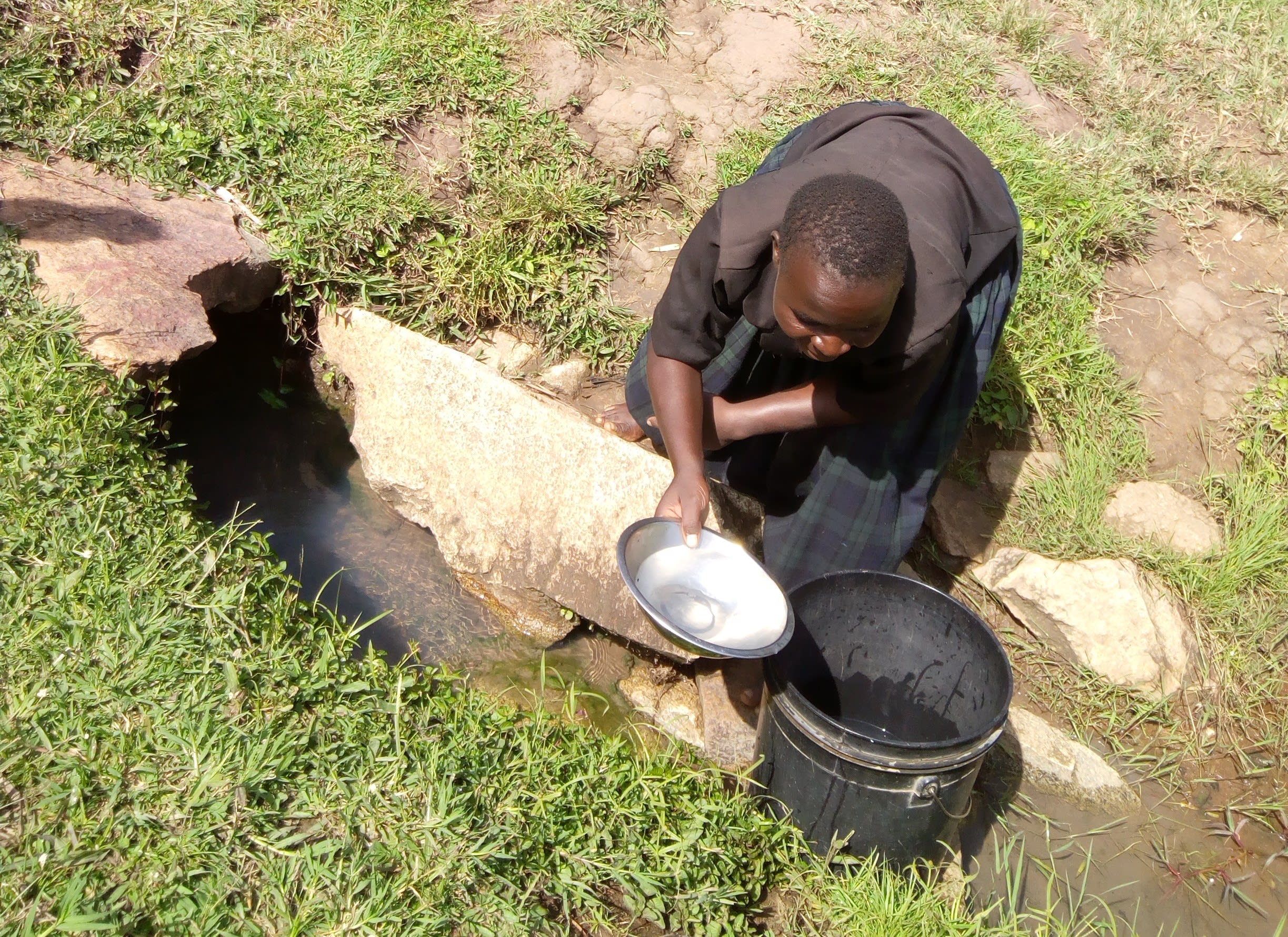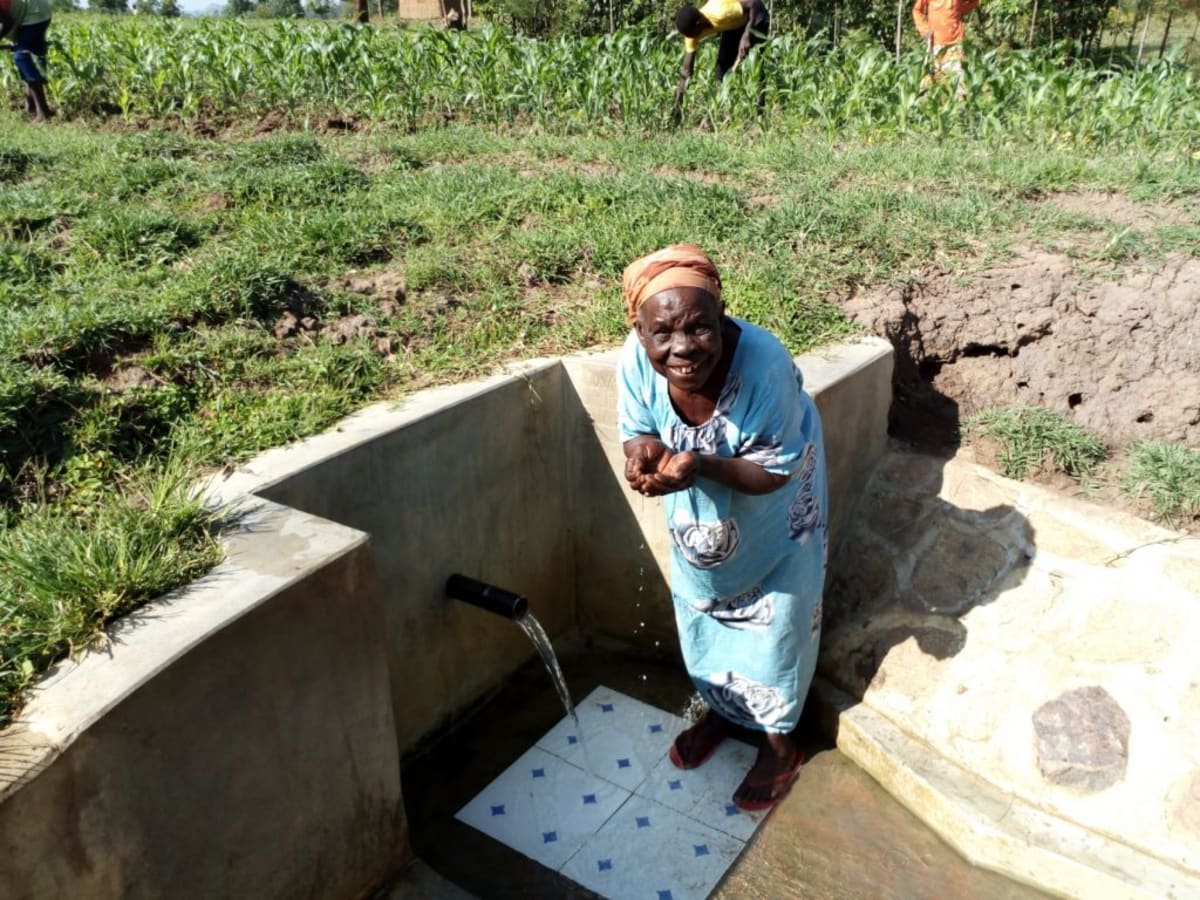This project is a part of our shared program with Western Water and Sanitation Forum (WEWASAFO). Our team is pleased to directly share the below report (edited for clarity, as needed).
Welcome to the Community
People living in Timbito wake up early in the morning to work on their farms. They plant maize and various vegetables, and are enjoying fulfilling work now that it's the rainy season - Most crops are now ready for harvest.
Any excess will be taken to the local market to sell and trade. They are currently selling sweet potatoes, maize, and beans. Some men are in the 'boda boda' business, ferrying people from one destination to another on bicycles or motorcycles.
We did a project to protect Timbito Spring on the other side of this community, and now it's time to bring clean water to even more people living here. A man living near Wakamu Spring visited Timbito Spring and saw the clean water for himself, and immediately sent in an application to our office.
Water Situation
Wakamu Spring is used by 45 different household living nearby in Timbito. They use its water throughout the year, sharing that there really isn't any other reliable source in their area. The water is used for drinking, cooking, and all other domestic chores. It is also used in gardens and farms when it hasn't rained for a while.
To cut down on trips to the spring, community members use the largest container they can manage to carry. When using a large container, a smaller cup must be brought to bail water directly from the spring. Smaller containers are just dunked directly under the water until full.
As much as the community members are glad that they have access to water, the bad side of it is that the water is not either clean or safe for human consumption. This was clearly evident during our visit, as one of the community members even brought their animals to drink directly from the spring. The community members also admit that they really need to boil water before drinking it, but they fail to do so at times. Firewood is hard to come by! Failing to treat this water always results in serious diarrhea and stomachache.
Sanitation Situation
Less than half of the households that rely on Wakamu Spring have pit latrines. Those who have them keep them in very poor condition; they weren't built well in the first place, nor are they clean. Because of these poor conditions, open defecation is an issue here.
As women care for their small children, they're often brought to the spring as they fetch water or carry out other chores there. Unfortunately, letting small children relieve themselves whenever and wherever they please is a socially acceptable practice in many rural areas - and that happens much too often around Wakamu Spring. Community members report that these feces are washed into their drinking water!
Dish racks and clotheslines would also greatly benefit the majority of households here; they're laying their clothes and utensils out on the ground to dry. We were not able to find many hand-washing stations either.
Plans: Hygiene and Sanitation Training
Community members will attend hygiene and sanitation training for at least two days. This training will ensure participants are no longer ignorant about healthy practices and their importance. The facilitator plans to use PHAST (Participatory Hygiene and Sanitation Transformation), CLTS (Community-Led Total Sanitation), ABCD (Asset-Based Community Development), group discussions, handouts, and demonstrations at the spring.
Training will also result in the formation of a committee that will oversee operations and maintenance at the spring. They will enforce proper behavior around the spring and delegate tasks that will help preserve the site, such as building a fence and digging proper drainage.
Plans: Sanitation Platforms
On the final day of training, participants will select five families that should benefit from new latrine floors.
Training will also inform the community and selected families on what they need to contribute to make this project a success. They must mobilize locally available materials, such as bricks, clean sand, hardcore, and ballast. The five families must prepare by sinking a pit for the sanitation platforms to be placed over. All community members must work together to make sure that accommodations and food are always provided for the work teams.
Plans: Spring Protection
Protecting the spring will ensure that the water is safe, adequate and secure. Construction will keep surface runoff and other contaminants out of the water.
Fetching water is predominantly a female role, done by both women and young girls. Protecting the spring and offering training and support will therefore help empower the female members of the community by giving them more time and efforts to engage and invest in income-generating activities.

 Protected Spring
Protected Spring
 Rehabilitation Project
Rehabilitation Project



































